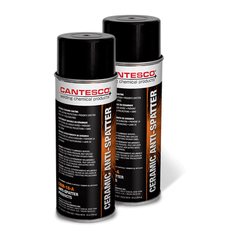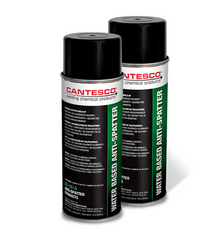The Comprehensive Guide to Anti-Spatter Sprays in Welding: Types, Benefits, and Application
Introduction:
Welding projects often encounter the challenge of spatter – those pesky droplets that can adhere to surfaces and equipment, making cleanup a daunting task. Anti-spatter sprays have emerged as the welder's ally, designed to prevent these droplets from becoming a nuisance. But what exactly are these sprays, and how do they work? In this guide, we explore the different types of anti-spatter sprays, their benefits, and application tips to help you choose and use them effectively.
What Are Anti-Spatter Sprays and Why Are They Important?
Anti-spatter sprays are specialized formulations that prevent welding spatter from sticking to work surfaces and equipment. Their importance cannot be overstated, as they not only save time on post-weld cleanup but also protect the integrity of the weld and the materials involved.

Types of Anti-Spatter Sprays:
Water-Based Anti-Spatter Sprays:
Q: Why choose water-based anti-spatter sprays? Eco-friendly and safe, water-based sprays use water as the primary solvent. They are perfect for welders looking to minimize environmental impact while effectively preventing spatter adhesion.
Solvent-Based Anti-Spatter Sprays:
Q: Are solvent-based anti-spatter sprays more effective? These sprays use powerful solvents to dissolve spatter. While highly effective, they are best used in well-ventilated areas due to their chemical composition.
Silicone-Based Anti-Spatter Sprays:
Q: Can silicone-based sprays affect subsequent surface treatments? Yes, while they offer excellent spatter protection, they may leave a residue that requires cleaning before additional surface treatments can be applied.
Aerosol Anti-Spatter Sprays:
Q: What makes aerosol sprays a popular choice among welders? Their convenience and ease of application make aerosol anti-spatter sprays a go-to for many professionals, available in various formulations to suit different needs.
Gel Anti-Spatter:
Q: How do gel anti-spatters compare in terms of protection? Gel formulations provide a thicker barrier, offering superior protection against spatter, especially in vertical or overhead welding.
Eco-Friendly or Biodegradable Anti-Spatter Sprays:
Q: Why opt for eco-friendly anti-spatter sprays? For those prioritizing environmental sustainability, these sprays offer a high-performance solution without the environmental footprint.

Benefits of Anti-Spatter Sprays:
- Minimize Cleanup Effort: Significantly reduces the time and effort needed for post-welding cleanup.
- Protect Equipment and Workpieces: Extends the life and maintains the quality of welding equipment and materials.
- Improve Welding Efficiency: Ensures smoother welding operations and superior weld quality.
- Versatile Applications: Suitable for a wide range of welding processes and materials.
Application Tips:
-
Q: How should anti-spatter spray be applied for maximum effectiveness? Follow the manufacturer's instructions closely, applying the spray evenly before welding, and allowing it to dry as recommended.
-
Q: Is there a recommended storage method for anti-spatter sprays? Yes, to preserve their efficacy, store them in a cool, dry place away from direct sunlight.
Conclusion:
Anti-spatter sprays are indispensable in the welding process, offering protection, efficiency, and quality improvements. By selecting the appropriate type and applying it correctly, welders can significantly enhance their workflow and output. This guide aims to answer the key questions surrounding these valuable products, helping you make informed decisions and streamline your welding projects.
